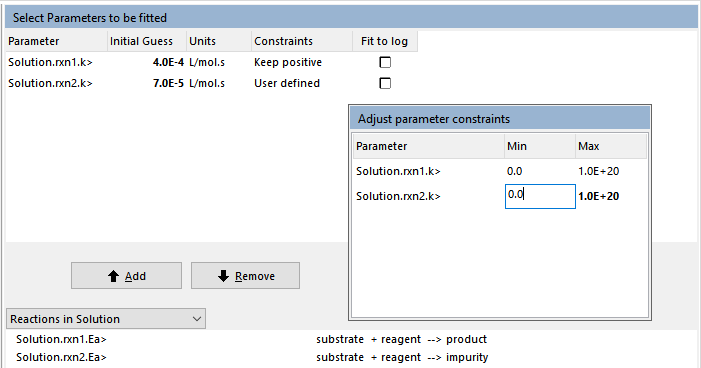Parameters for fitting can be given initial guesses. By default the initial guess is the value specified in the model (or the first selected scenario for Scenario parameters). This initial guess can be modified before running by clicking directly in cells containing bold text in the parameters list, then typing new values. After a successful fit, the initial guess is updated to the fitted value of the parameter.

Once a fit has been found, the initial guesses can be adjusted and Fitting run again to check if a better fit can be found, or if the Fitting module returns to the same parameter value. Fitting statistics (e.g. confidence intervals) are only calculated for fitted parameters and after a fit has been allowed to run to completion..
Constraints on permitted parameter values can also be provided. This can prevent parameter values becoming unrealistic (for example preventing rate constants from becoming negative). If necessary, use the dropdown to select the type of constraint to apply (Keep positive, Keep negative, unconstrained or user defined). The default for many parameters is 'Keep positive'.
If user defined is selected as the constraint type, a table appears allowing the user to enter max and min values for the parameter.
If a parameter value reaches a constraint while fitting, the parameter value is set at the constraint (i.e. the parameter is ‘fixed’) and is no longer varied by the fitting algorithm. Fitting continues with the remaining ‘free’ parameters. After a fit is found, Fitting checks to see if freeing any constrained parameter improves the fit and if so, Fitting again continues with the new set of free parameters.
The initial guess must lie between the min and max values (the constraints).